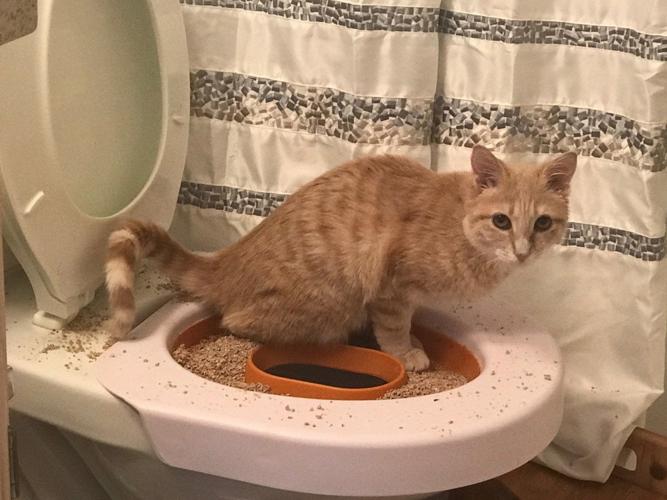Avoid Flush Cat Poop Down Your Toilet - Safeguard Your Plumbing Infrastructure
Avoid Flush Cat Poop Down Your Toilet - Safeguard Your Plumbing Infrastructure
Blog Article
Each person has got his or her own way of thinking when it comes to How to Dispose of Cat Poop and Litter Without Plastic Bags.

Intro
As feline owners, it's vital to bear in mind just how we get rid of our feline pals' waste. While it might appear convenient to flush feline poop down the commode, this technique can have detrimental consequences for both the environment and human health and wellness.
Environmental Impact
Flushing pet cat poop presents dangerous pathogens and parasites right into the water supply, presenting a significant threat to aquatic communities. These pollutants can negatively impact aquatic life and compromise water quality.
Wellness Risks
Along with environmental issues, flushing cat waste can additionally present health and wellness threats to humans. Pet cat feces might include Toxoplasma gondii, a bloodsucker that can create toxoplasmosis-- a potentially severe health problem, specifically for pregnant ladies and individuals with weakened body immune systems.
Alternatives to Flushing
Thankfully, there are much safer and extra responsible methods to throw away pet cat poop. Take into consideration the following alternatives:
1. Scoop and Dispose in Trash
One of the most usual method of taking care of feline poop is to scoop it into a naturally degradable bag and throw it in the garbage. Make sure to use a devoted litter inside story and dispose of the waste without delay.
2. Usage Biodegradable Litter
Select biodegradable cat clutter made from materials such as corn or wheat. These trashes are eco-friendly and can be safely thrown away in the trash.
3. Bury in the Yard
If you have a backyard, consider hiding pet cat waste in a designated area away from vegetable gardens and water sources. Make sure to dig deep sufficient to prevent contamination of groundwater.
4. Install a Pet Waste Disposal System
Buy a pet dog waste disposal system specifically made for cat waste. These systems make use of enzymes to break down the waste, reducing odor and ecological effect.
Verdict
Responsible pet ownership extends beyond providing food and shelter-- it also involves appropriate waste administration. By refraining from purging feline poop down the toilet and choosing alternative disposal approaches, we can lessen our environmental impact and safeguard human health.
Why Can’t I Flush Cat Poop?
It Spreads a Parasite
Cats are frequently infected with a parasite called toxoplasma gondii. The parasite causes an infection called toxoplasmosis. It is usually harmless to cats. The parasite only uses cat poop as a host for its eggs. Otherwise, the cat’s immune system usually keeps the infection at low enough levels to maintain its own health. But it does not stop the develop of eggs. These eggs are tiny and surprisingly tough. They may survive for a year before they begin to grow. But that’s the problem.
Our wastewater system is not designed to deal with toxoplasmosis eggs. Instead, most eggs will flush from your toilet into sewers and wastewater management plants. After the sewage is treated for many other harmful things in it, it is typically released into local rivers, lakes, or oceans. Here, the toxoplasmosis eggs can find new hosts, including starfish, crabs, otters, and many other wildlife. For many, this is a significant risk to their health. Toxoplasmosis can also end up infecting water sources that are important for agriculture, which means our deer, pigs, and sheep can get infected too.
Is There Risk to Humans?
There can be a risk to human life from flushing cat poop down the toilet. If you do so, the parasites from your cat’s poop can end up in shellfish, game animals, or livestock. If this meat is then served raw or undercooked, the people who eat it can get sick.
In fact, according to the CDC, 40 million people in the United States are infected with toxoplasma gondii. They get it from exposure to infected seafood, or from some kind of cat poop contamination, like drinking from a stream that is contaminated or touching anything that has come into contact with cat poop. That includes just cleaning a cat litter box.
Most people who get infected with these parasites will not develop any symptoms. However, for pregnant women or for those with compromised immune systems, the parasite can cause severe health problems.
How to Handle Cat Poop
The best way to handle cat poop is actually to clean the box more often. The eggs that the parasite sheds will not become active until one to five days after the cat poops. That means that if you clean daily, you’re much less likely to come into direct contact with infectious eggs.
That said, always dispose of cat poop in the garbage and not down the toilet. Wash your hands before and after you clean the litter box, and bring the bag of poop right outside to your garbage bins.
https://trenchlesssolutionsusa.com/why-cant-i-flush-cat-poop/

Hopefully you enjoyed our piece on Can You Flush Cat Poop Down The Toilet?. Thanks a lot for taking time to read our piece of content. Sharing is caring. You won't know, you may be doing someone a favor. We love reading our article about How to Dispose of Cat Poop and Litter Without Plastic Bags.
Call Today Report this page